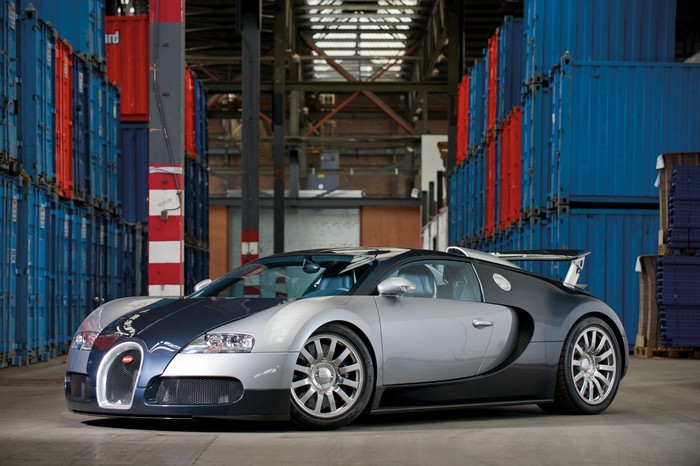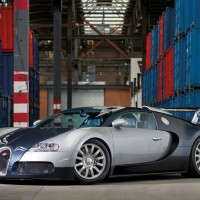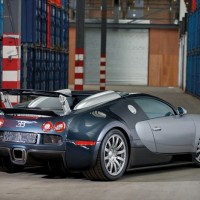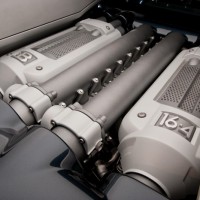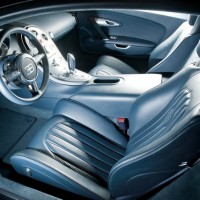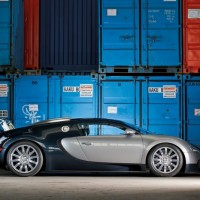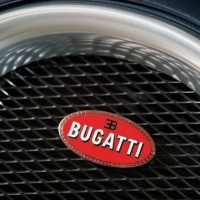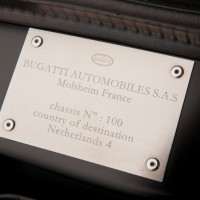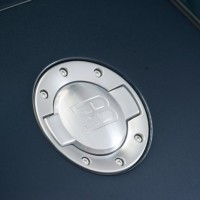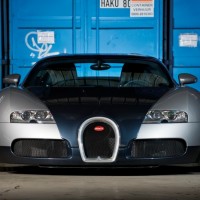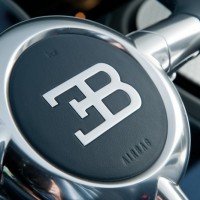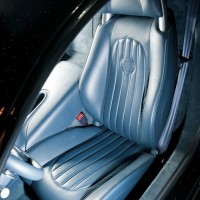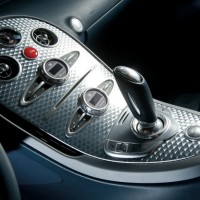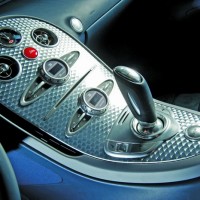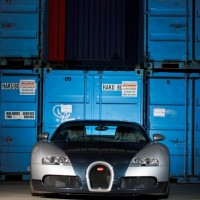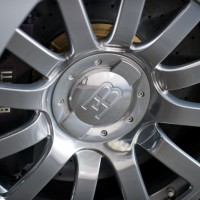SCM Analysis
Detailing
| Vehicle: | 2008 Bugatti Veyron EB 16.4 |
| Number Produced: | 300 |
| Original List Price: | $1,800,000 |
| Tune Up Cost: | The price of a Porsche Boxster. If repairs are needed, add a 911 Turbo |
| Chassis Number Location: | Various locations, including top of dashboard |
| Engine Number Location: | Side of block |
| Club Info: | Any one you want to join |
| Website: | http://www.bugattiownersclub.co.uk |
This car, Lot 122, sold for 579,600 GBP ($933,814), including buyer’s premium, at RM Auctions’ London auction on October 31, 2012.
One can argue that the modern supercar era began with the introduction of the Lamborghini Miura in 1966. So, if the Miura was every schoolboy’s dream in the 1960s — giving way to the Ferrari Boxer in the 1970s, the Lamborghini Countach in the 1980s, and the McLaren F1 in the 1990s — then certainly the Bugatti Veyron wears the poster-over-the-bed crown for today’s youth.
Quite frankly, I would have to say whatever car we argue is in second place is a really distant second as well. Look at the Veyron’s specs to see the stuff of dreams: Eight liters. 16 cylinders. 1,001 horsepower. 0–60 mph in 2.6 seconds, with a top speed of 253 mph. And, to answer the second question every gawker asks after you tell them 253 mph, yes, it cost freaking $1.8m when new.
Worthy of the Bugatti name
But is the Veyron, a product of the reborn Bugatti badge, cut of the same cloth as its namesake’s pre-war Grand Prix cars, or is it more Volkswagen than Bugatti? The answer is clear; the Veyron is indeed a car worthy of the name and a true modern Bugatti, regardless of the brand’s parent company’s modest mainstream offerings.
The Veyron simply killed any existing notions of what “fast” was, and that anything truly fast had to be unruly and uncomfortable. The Veyron is anything but. It is a 1,001-hp car that is civilized enough to drive every day, and there are quite a few Veyrons with considerable mileage on their odometers.
The engineering within is the new standard to which supercars are now judged. For example, the Veyron’s DSG gearbox is programmed so perfectly that every shift is perfect every time. Seven years down the road, Ferrari is still trying to figure that trick out, and Lamborghini hasn’t even pulled into the figuring-it-out parking lot yet.
I quizzed Road & Track’s Senior Editor Jason Cammisa, the Jedi Master of modern supercars, about his thoughts on the Veyron: “The best part about the car is that every single piece is gorgeous and well made. Yeah, so the key is last-generation VW, and the gauges now look 10 years old. But you pull trim pieces and realize that everything is just different.
“Look in the rearview mirror at an Aventador and you see a cheap plastic cover on the positive jump-start terminal in the engine compartment with a red “+” on it and a wire hanging out. You can spend three days looking at a Veyron and you’ll see nothing of the sort. Every screw head is perfect (and gorgeous). It’s hard to say it’s ‘worth the money,’ but the more time you spend with a Veyron, the more you see where the money actually went. I think the Veyron is the real deal and always will be. Stupid party tricks like the Aventador are all about their looks and sound and numbers. The Veyron kicked everyone’s ass without calling attention to itself.”
Well, is it collectible?
But let’s get to what matters to SCMers: Will the Veyron stand the test of time as a collectible, along the lines of cars like the McLaren F1? I sure think so.
Like any new exotic car, they have been subject to depreciation from their original $1.8m MSRP. The prevailing market for low-mileage cars, at least at the “ask,” seems to be in the $1.2m range. Obviously, higher-mileage examples — and that one the guy drove into the lake — will sell for less.
The most high-profile, low-price Veyron is the (then) 11,800-mile car that sold at no reserve at Barrett-Jackson’s Las Vegas sale in 2010 for $770k — only to have its Kevin Federline-impersonator high bidder refuse to sign the ticket. B-J CEO Craig Jackson bought it when nobody else stepped up, and he has made it no secret that he loves driving it.
Which brings us to our subject car — an essentially new 2008 Veyron that sold at RM for a touch over $900k. I’m not good with math, but that’s about a 50% discount from sticker, which makes the first owner’s cost per mile significantly more than my mortgage payment.
For a one-owner “in the wrapper” Veyron, I’m calling this well bought, and I think the coming years will prove it. If nothing else, that’s only about $900 per horsepower, or around $3,600 per mph. How can you go wrong with that? ?
(Introductory description courtesy of RM Auctions.)
